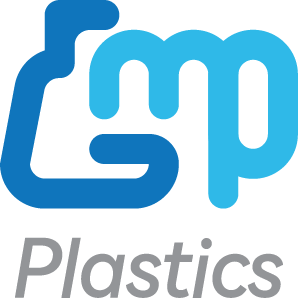Bioprocessing 101: The Science of Growing the Future!
Hey there, science explorers! 🚀 Have you ever wondered how we turn tiny cells into life-saving medicines, biofuels, or even synthetic food? It all comes down to a fascinating field called bioprocessing!
Bioprocessing is like being a farmer, but instead of growing crops, we grow bacteria, yeast, or mammalian cells—tiny living factories that can produce everything from insulin to plant-based meat. Sounds cool, right? Well, buckle up, because we’re about to dive deep into the amazing world of biofactories, shaker flasks, and centrifuge tubes!
What is Bioprocessing?
At its core, bioprocessing is the science of using living cells to make useful products. This could be anything from medicine and biofuels to enzymes that help make cheese. Instead of relying on chemical synthesis, we let microorganisms do the work—and they do it really well.
The Three Key Steps of Bioprocessing
- Upstream Processing – Preparing and growing the cells.
- Bioreaction – Letting the cells work their magic to produce the desired product.
- Downstream Processing – Extracting, purifying, and packaging the product for use.
Biofactories: The Microscopic Powerhouses of Bioprocessing
Now, you might be thinking: Where does all this magic happen? Well, in biofactories—specialized laboratories or industrial setups where cells are grown, fed, and optimized to make as much of a desired product as possible.
🦠 Think of a biofactory as a super-advanced farm, but instead of cows, we’re farming bacteria, yeast, or mammalian cells.
Inside these biofactories, we have:
- Bioreactors – Large tanks where cells are grown under highly controlled conditions.
- Shaker flasks – Used in labs to grow cells in smaller batches.
- Centrifuge tubes – Used to separate and collect cells or proteins from a liquid mixture.
We carefully control everything: temperature, oxygen levels, nutrients—even pH levels. Why? Because happy cells = higher production!
Shaker Flasks: The Lab-Scale Workhorse
Before cells are ready for industrial-scale production, they start in shaker flasks. These are special glass or plastic containers that help scientists test and optimize cell growth in small batches before scaling up to larger reactors.
🔬 Imagine a smoothie blender, but instead of mixing fruit, it’s growing millions of tiny cells!
Why Are Shaker Flasks So Important?
✔️ Small-scale testing – Scientists use them to test different conditions before large-scale production.
✔️ Perfect mixing – The shaking motion keeps cells suspended and oxygenated.
✔️ Rapid optimization – We can test different nutrient levels and conditions to maximize yield.
Shaker flasks are the first step in any large bioprocess. If cells grow well here, they’re ready for biofactories and large-scale production!
Centrifuge Tubes: Spinning Science into Action
Alright, we’ve grown our cells—now what? Time for some centrifugation!
🔄 A centrifuge is like a high-speed merry-go-round—except instead of making people dizzy, it separates cells, proteins, and liquids.
Centrifuge tubes are used to:
- Harvest cells from a liquid culture.
- Separate proteins and byproducts from the reaction mix.
- Purify the final product before packaging.
Think of it this way: If you blend a fruit smoothie and want to separate the juice from the pulp, you’d strain it. A centrifuge does the same thing—but at super-high speeds!
💡 Fun fact: Some centrifuges spin at over 100,000 times per minute! That’s faster than a jet engine!
Real-World Applications of Bioprocessing
Now that we’ve got the basics down, let’s look at how bioprocessing is shaping the future of medicine, energy, and food!
🏥 1. Biopharmaceuticals: Life-Saving Medicines
One of the biggest breakthroughs in medicine is the ability to produce insulin, vaccines, and monoclonal antibodies using bioprocessing.
Example: Insulin for diabetes treatment
- Scientists grow genetically modified bacteria or yeast that produce human insulin.
- The insulin is then extracted, purified, and packaged into life-saving medicine.
🌱 2. Biofuels: Powering the Future with Algae
Fossil fuels? Pfft, so last century! With bioprocessing, we can use microalgae to produce biodiesel—a renewable energy source.
- Scientists grow algae in large bioreactors.
- The algae produce oils, which are extracted and converted into fuel.
- The result? A cleaner, greener energy source!
🍔 3. Lab-Grown Meat: The Future of Food?
What if we could produce real meat without killing animals? Thanks to bioprocessing, we can!
- Scientists take animal cells and grow them in bioreactors.
- These cells multiply and form muscle tissue—just like in a real animal.
- The result? A sustainable, ethical meat alternative!
The Future of Bioprocessing: What’s Next?
Bioprocessing is still evolving, and the possibilities are endless. In the future, we could see:
🚀 Personalized medicine – Growing custom treatments for individual patients.
🌍 Biodegradable plastics – Made using bacteria instead of petroleum.
🧬 Gene therapy – Using engineered cells to cure genetic diseases.
The bio-revolution is just getting started, and shaker flasks, biofactories, and centrifuge tubes are leading the way!
Final Thoughts: Why Bioprocessing Matters
Whether it’s medicines, fuel, or food, bioprocessing is transforming the world. So the next time you hear about a new vaccine, biofuel, or lab-grown burger, remember:
🔬 Behind every breakthrough is a flask, a centrifuge tube, and millions of tiny cells working hard to change the world!
🚀 Stay curious, stay safe, and keep exploring the wonders of science!





